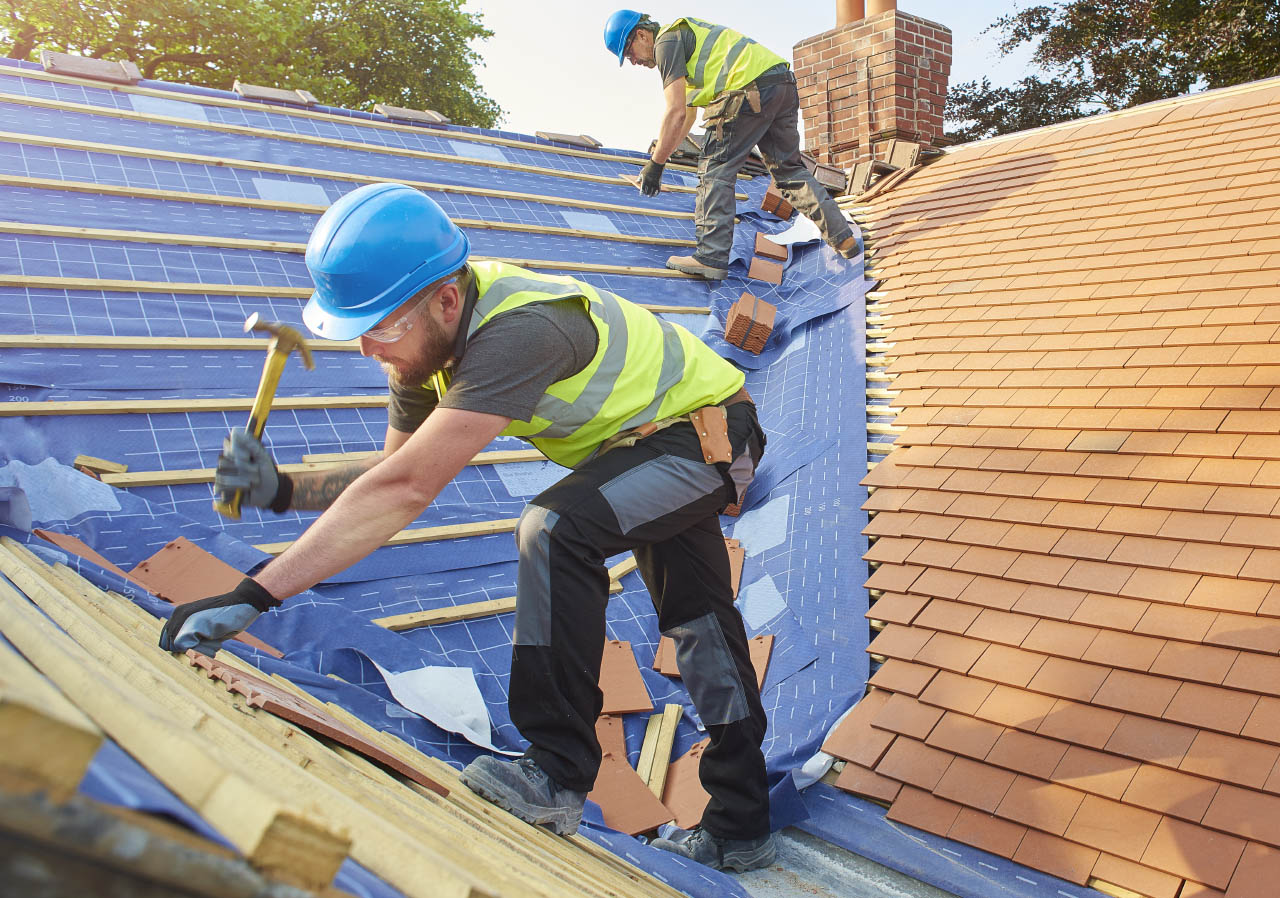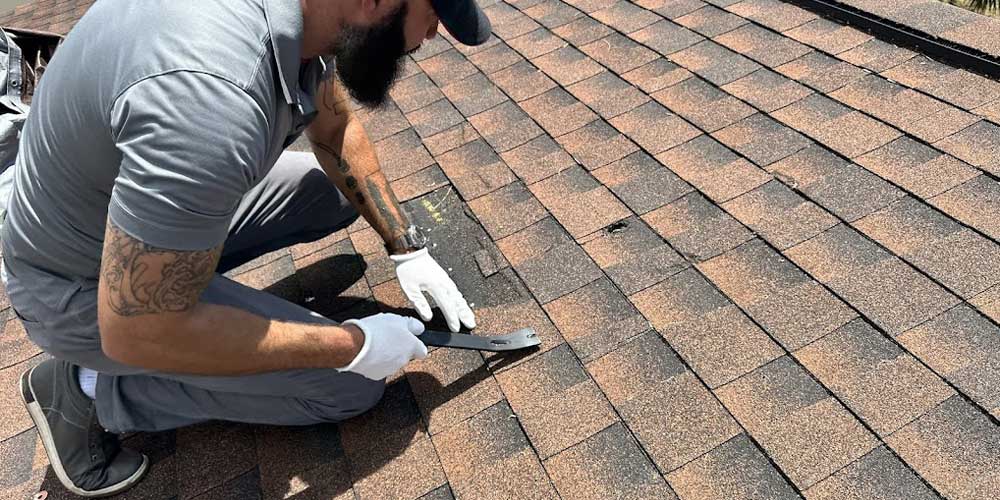Recognizing the Different Kinds Of Roofing Systems: A Comprehensive Guide for Homeowners
In the realm of homeownership, choosing the proper roofing design is a decision that brings considerable implications for both performance and aesthetic appeal. With a range of alternatives-- varying from the conventional gable to the contemporary level-- each kind offers one-of-a-kind benefits and difficulties that ought to align with the home owner's environmental factors to consider and details demands. Comprehending these distinctions not just aids in making an educated selection however likewise influences lasting maintenance and energy effectiveness. As we check out the ins and outs of various roof kinds, it becomes evident that a person dimension does not fit all; the appropriate option might shock you.
Saddleback Roof
Gable roofings, identified by their triangular form, are among the most prominent roof covering styles because of their simplicity and efficiency in losing water and snow. This style features 2 sloping sides that satisfy at a ridge, allowing for reliable drainage and lessening the threat of water build-up. The steep pitch frequently associated with saddleback roofs improves their ability to manage hefty precipitation, making them appropriate for numerous climates.
In enhancement to their useful benefits, gable roof coverings offer visual convenience. They can be adjusted to various architectural styles, from standard to modern-day homes. The layout can also suit additional functions such as dormer windows, which improve natural light and ventilation in the attic room room.
Additionally, saddleback roofs supply ample space for insulation, contributing to power effectiveness. Homeowners can select from a selection of roof covering materials, including asphalt shingles, metal, and floor tiles, additionally improving modification options.
Despite their advantages, gable roofing systems may require extra support in areas susceptible to high winds or heavy snowfall. On the whole, the saddleback roof continues to be a popular choice as a result of its blend of capability, resilience, and visual appeal.
Apartment Roofs
Level roofings are typically acknowledged for their minimalist layout and functional applications, especially in industrial and business setups (oahu roofing). These roofings include a straight or virtually straight surface, which enables simple building and functional area utilization. While they might lack the visual appeal of pitched roofs, level roof coverings use various advantages, specifically in urban settings where making the most of room is important
One of the primary advantages of flat roofing systems is their accessibility. Home owners can use the roofing room for numerous purposes, such as roof gardens, terraces, or photovoltaic panel setups. In addition, flat roofing systems are usually much more economical to preserve and set up contrasted to their sloped equivalents, as they call for fewer products and labor.
Usual materials utilized for level roofings include built-up roof (BUR), customized bitumen, and single-ply membranes, each offering unique advantages. In general, flat roofing systems serve as a versatile and useful option for lots of homeowners and organizations alike.
Hip Roof Coverings
Hip roofs are identified by their sloped sides that merge at the top, creating a ridge. This design stands out from saddleback roofs, as all 4 sides of a hip roofing system slope downwards towards the walls, providing an extra stable structure. The angle of the slopes can differ, enabling versatility in building aesthetic appeals and performance.
One of the key benefits of hip roofing systems is their capability to stand up to hefty winds and damaging weather. The sloped surfaces enable much better water drainage, lowering the threat of leakages and water damages. Furthermore, hip roofing systems supply boosted attic space, which can be utilized for storage or also exchanged habitable locations.
Nevertheless, creating a hip roofing system can be more complex and pricey than less complex roof covering types, such as gable roof coverings. The additional material and labor involved in creating the slopes and making certain proper structural integrity can result in higher expenditures. Despite these downsides, several house owners prefer hip roof coverings for their toughness, aesthetic allure, and capacity for energy effectiveness.
Mansard Roof Coverings
Mansard roofs, frequently identified by their distinct four-sided design, function 2 inclines on each side, with the reduced incline being steeper than the top. This building style, stemming from France in the 17th century, is not only visually appealing yet practical, as it makes best use of the useful space in the top floorings of a structure. The high lower incline enables even more clearance, making it a perfect choice for attics or lofts, which can be converted into living spaces.
Mansard roofs are identified by their flexibility, accommodating numerous building styles, from conventional to contemporary. They can be built with different materials, consisting of asphalt roof shingles, slate, or steel, supplying house owners with an array of options to match their budgets and preferences. In addition, the style enables the assimilation of dormer windows, improving natural light and air flow in the top levels.
However, it is important to take try this site into consideration the possible downsides. Mansard roofing systems may require even more upkeep due to the intricacy of their style, and their high slopes can be testing for snow go to this site and rain runoff. Generally, mansard roofing systems integrate style with functionality, making them a prominent choice amongst property owners looking for distinctive architectural features.
Lost Roofing Systems
As house owners increasingly look for simpleness and performance in their building styles, lost roofs have actually emerged as a prominent choice. Defined by a solitary sloping airplane, a shed roof covering presents a minimal visual that complements numerous home styles, from modern to rustic.
One of the key benefits of a shed roofing is its straightforward building, which usually translates to lower labor and material expenses. This layout permits for efficient water drain, reducing the danger of leakages and water damages. Furthermore, the upright incline gives sufficient room for skylights, boosting natural light within the inside.
Dropped roof coverings also provide flexibility in terms of use. They can be properly incorporated right into enhancements, garages, or exterior frameworks like sheds and structures. In addition, this roofing system design can accommodate numerous roof products, consisting of steel, asphalt tiles, or perhaps environment-friendly roofing systems, straightening with eco-friendly initiatives.
Nevertheless, it is necessary to take into consideration regional environment problems, as hefty snow tons may demand modifications to the roofing's angle or framework. Overall, dropped roofs provide a functional and aesthetically pleasing option for homeowners wanting to make best use of performance without endangering design.
Final Thought


Gable roofing systems, identified by their triangular shape, are among the most prominent roof covering styles due to their simpleness and efficiency in shedding water and snow. oahu roofing. The high pitch typically associated with gable roofing systems enhances their ability to take care of heavy rainfall, making them appropriate for different climates
While they might lack the aesthetic allure of pitched roofing systems, level roofing systems provide countless advantages, specifically in metropolitan atmospheres where optimizing space is crucial.
